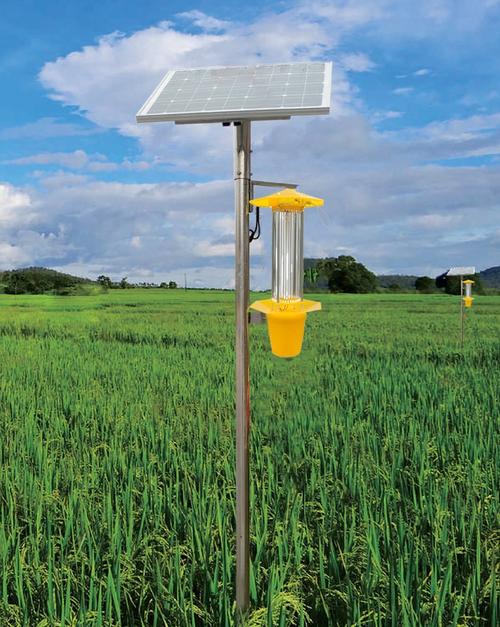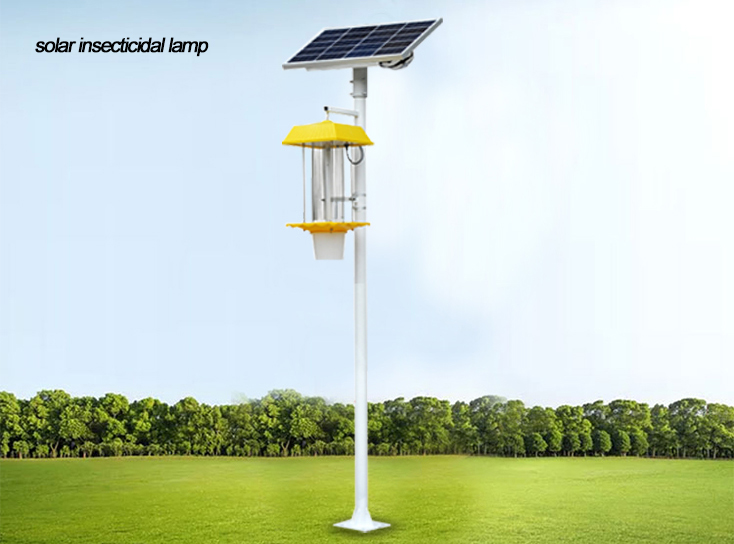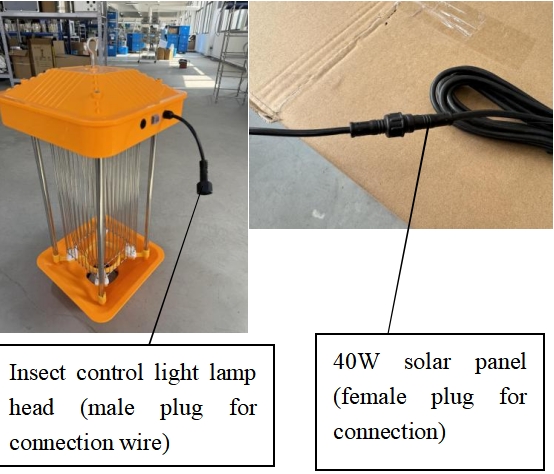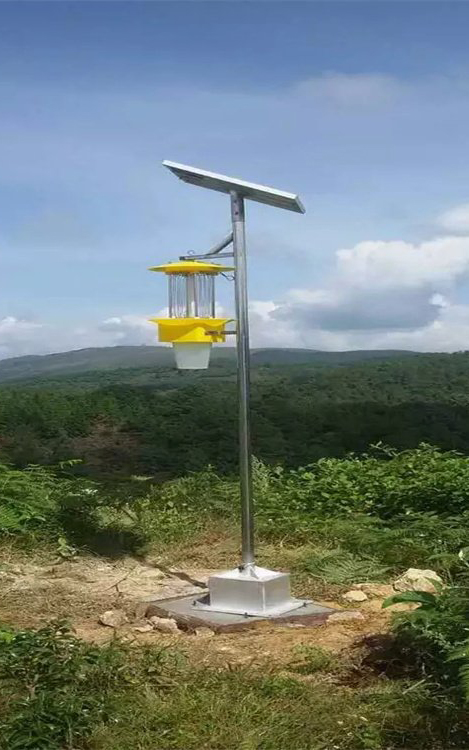

— Blogs —
—Products—
 Consumer hotline +8618073152920
Consumer hotline +8618073152920 WhatsApp:+8615367865107
Address:Room 102, District D, Houhu Industrial Park, Yuelu District, Changsha City, Hunan Province, China
Product knowledge
Time:2025-10-08 16:06:03 Popularity:414
Solar insect traps are no longer a niche tool; they are a critical component of modern Integrated Pest Management (IPM). These low-cost, low-maintenance devices drastically help reduce chemical pesticide use while providing real-time, actionable pest monitoring data. Understanding the full range of solar insect trap uses ensures you deploy the right trap in the right place, achieving measurable results and a clear return on investment (ROI).

A solar-powered insect light trap is a self-contained pest control and monitoring system. It charges its internal battery during the day via a solar panel and activates at night, utilizing specific UV or LED wavelengths to attract target insects. Trapping mechanisms vary, including powerful suction fans, high-voltage electric grids, or adhesive plates.
This off-grid capability makes them ideal for remote farms, large-scale fields, and areas lacking conventional power sources.
The versatility of the solar insect trap allows for multiple functions beyond simple trapping:
The primary modern use is as a sentinel device. Strategically placed traps monitor the presence, species, and population density of harmful pests. The data collected drives precision in your control strategy, helping you:
Accurately time spray applications (reducing costly and unnecessary sprays).
Identify pest migration patterns and new infestation zones.
Validate the effectiveness of other control methods.
In zones with small to medium infestations—or for pests like specific moths, beetles, flies, and whiteflies—the traps materially reduce the adult breeding population. This is a direct method of lowering the overall pest pressure and minimizing subsequent crop damage.

Pests don't stop after the harvest. Installing traps in:
Storage sheds
Packing and processing areas
Warehouses
...helps intercept adult insects that would otherwise contaminate the harvested produce or packaging lines, ensuring product quality and compliance.
Greenhouses and polytunnels are contained environments where chemical residues can accumulate. Solar insect traps for agriculture provide a chemical-free, targeted method to reduce pest pressure on high-value crops, such as ornamentals, medical plants, and specialty vegetables.
While often associated with farms, their chemical-free operation makes them invaluable for urban pest control:
Public Parks and Schools: Providing a safer method to control biting flies and mosquitos.
Near Food Processing Facilities: Acting as a line of defense against pests that could breach hygiene standards.
To maximize your ROI and the efficacy of your solar insect trap, deployment must be strategic:
Spacing Strategy: Adjust density based on risk. A typical low-density deployment is 1–3 traps/hectare (ha) for monitoring, while high-risk or mass-trapping efforts may require 5–10/ha.
Height & Placement: For flying moths, place the light about 1.0–1.5 meters above the crop canopy. Prioritize placement near crop edges, windbreaks, and known pest hotspots.
Integration is Key: Achieve a complete IPM solution by combining solar-powered insect light traps with pheromone traps, sticky traps, and meteorological sensors.

The most significant evolution in solar insect trap uses is the integration with Internet of Things (IoT) technology.
Modern systems (like those offered by NiuBoL) incorporate LoRa or Wi-Fi connectivity, transforming each trap into a remote, data-collecting sensor node. This enables:
Centralized Monitoring: View population trends across your entire operation from a single dashboard.
Automated Counting: Digital imaging and AI can count and, in some cases, classify pests, reducing labor costs.
Predictive Analytics: Use historical trap data to forecast peak infestation times, further optimizing control measures.
Location: Southeast Asia Vegetable Farms (2024 Pilot Program)
Deployment: 150 NiuBoL traps deployed across 30 small-to-medium-sized vegetable farms.
Outcome: Farmers recorded a 40% reduction in spray frequency, a 30% lower pest-related crop loss, and achieved pesticide cost savings that fully recovered the solar insect trap price within one single planting season.
The disadvantage of the solar insect trap's initial purchase price is consistently offset by the long-term savings on chemical inputs and labor.

Q: Do solar traps work in cloudy regions?
A: Yes. Modern traps are designed for resilience. Choose models with a larger battery capacity and robust solar panels; many quality units can run effectively for 2–3 nights without any direct sunlight charging.
Q: Do they harm beneficial insects and pollinators?
A: Minimizing harm to beneficial insects is critical. Proper wavelength selection (e.g., favoring specific UV over broad white light) and strategic placement—specifically avoiding known flight paths and flowering hedgerows—will minimize the impact on pollinators like bees.
NiuBoL offers advanced solar insect traps optimized for demanding agricultural deployments, featuring optional IoT telemetry for integrated pest monitoring.
Ready to see a measurable reduction in your pesticide costs? Contact: sales@niubol.com — Request a personalized deployment plan and ROI estimate for your operation.
Related recommendations
Sensors & Weather Stations Catalog
Agriculture Sensors and Weather Stations Catalog-NiuBoL.pdf
Weather Stations Catalog-NiuBoL.pdf
Related products
 Combined air temperature and relative humidity sensor
Combined air temperature and relative humidity sensor Soil Moisture Temperature sensor for irrigation
Soil Moisture Temperature sensor for irrigation Soil pH sensor RS485 soil Testing instrument soil ph meter for agriculture
Soil pH sensor RS485 soil Testing instrument soil ph meter for agriculture Wind Speed sensor Output Modbus/RS485/Analog/0-5V/4-20mA
Wind Speed sensor Output Modbus/RS485/Analog/0-5V/4-20mA Tipping bucket rain gauge for weather monitoring auto rainfall sensor RS485/Outdoor/stainless steel
Tipping bucket rain gauge for weather monitoring auto rainfall sensor RS485/Outdoor/stainless steel Pyranometer Solar Radiation Sensor 4-20mA/RS485
Pyranometer Solar Radiation Sensor 4-20mA/RS485
Screenshot, WhatsApp to identify the QR code
WhatsApp number:+8615367865107
(Click on WhatsApp to copy and add friends)
